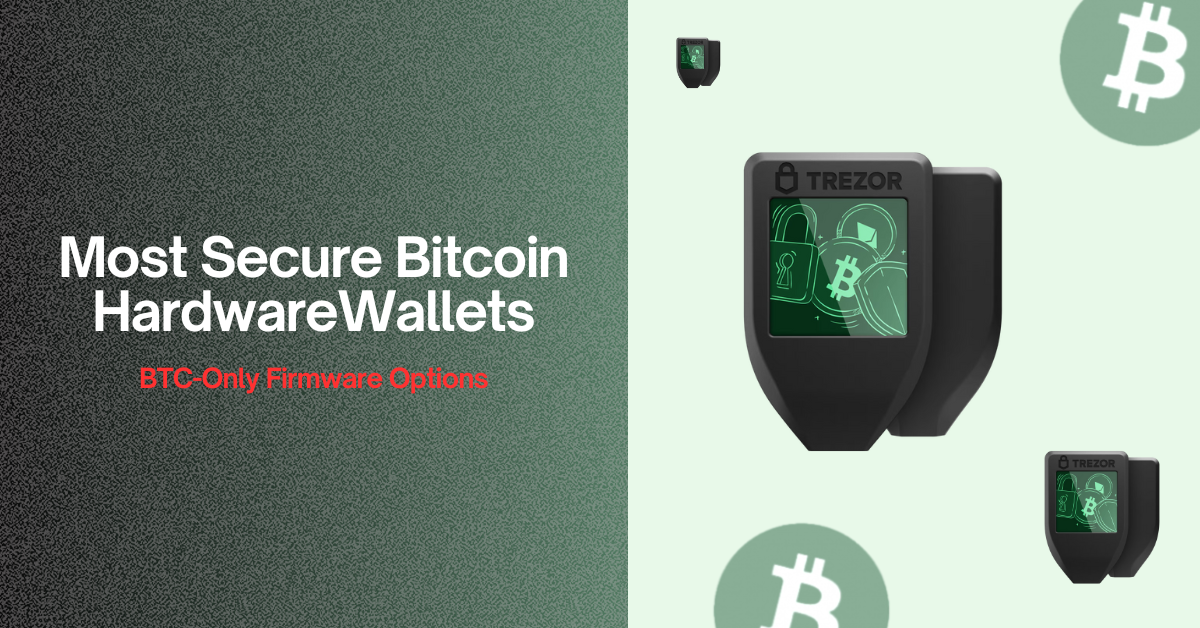After the FTX collapse, I learned the hard way that leaving Bitcoin on exchanges is risky because they can freeze accounts, suffer hacks, or vanish overnight. You need the most secure hardware wallet for Bitcoin that can HODL your BTC for you with full self-custody.
I mainly define “safe” by looking at several important factors. To start with, check the security chip and its certification level. Higher certifications like EAL6+ resist sophisticated attacks. I also value open-source firmware because transparency builds trust, and I also examine build quality, ease of use, and backup options. A wallet must be easy to use, or you should ignore it. These criteria guide my evaluation of the devices below.
The most secure Bitcoin hardware wallets are Trezor Safe 5 (Bitcoin-only edition), Ledger Flex, ELLIPAL Titan 2.0, Keystone 3 Pro, and BitBox02 BTC edition.
5 Most Secure Bitcoin Hardware Wallets (My BTC-Only Options)
I have tested over 20+ safest Bitcoin hardware wallets based on their security features, BTC storage options, user experience, and price. Here are my top 5 most secure Bitcoin hardware wallets:
- Trezor Safe 5: Bitcoin-only edition hardware wallet (anonymous with Tor support)
- Ledger Flex: Popular Bitcoin hardware wallet (Trusted by 10M users)
- ELLIPAL Titan 2.0: Air-gapped wallet for Bitcoin (no WiFi, no Bluetooth)
- Keystone 3 Pro: Safest Bitcoin wallet for everyday use (3 SE chips)
- BitBox02: Bitcoin-only cold wallet (Desktop wallet)
Safest Ways to Store Bitcoin (BTC) Offline Reviewed
These are my 2 safest options for you and are also trusted by millions of users. Currently, Ledger ranks #1 in hardware wallets, and Trezor ranks #2. But, for the BTC storage part, Trezor offers a special edition with Bitcoin-only firmware.
| Image | Bitcoin Wallet | Rating | Price |
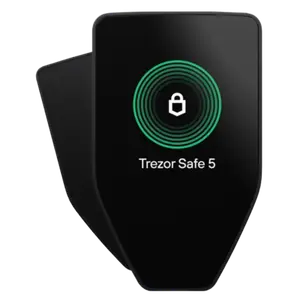 |
Trezor Safe 5 |
10
|
$169.00
|
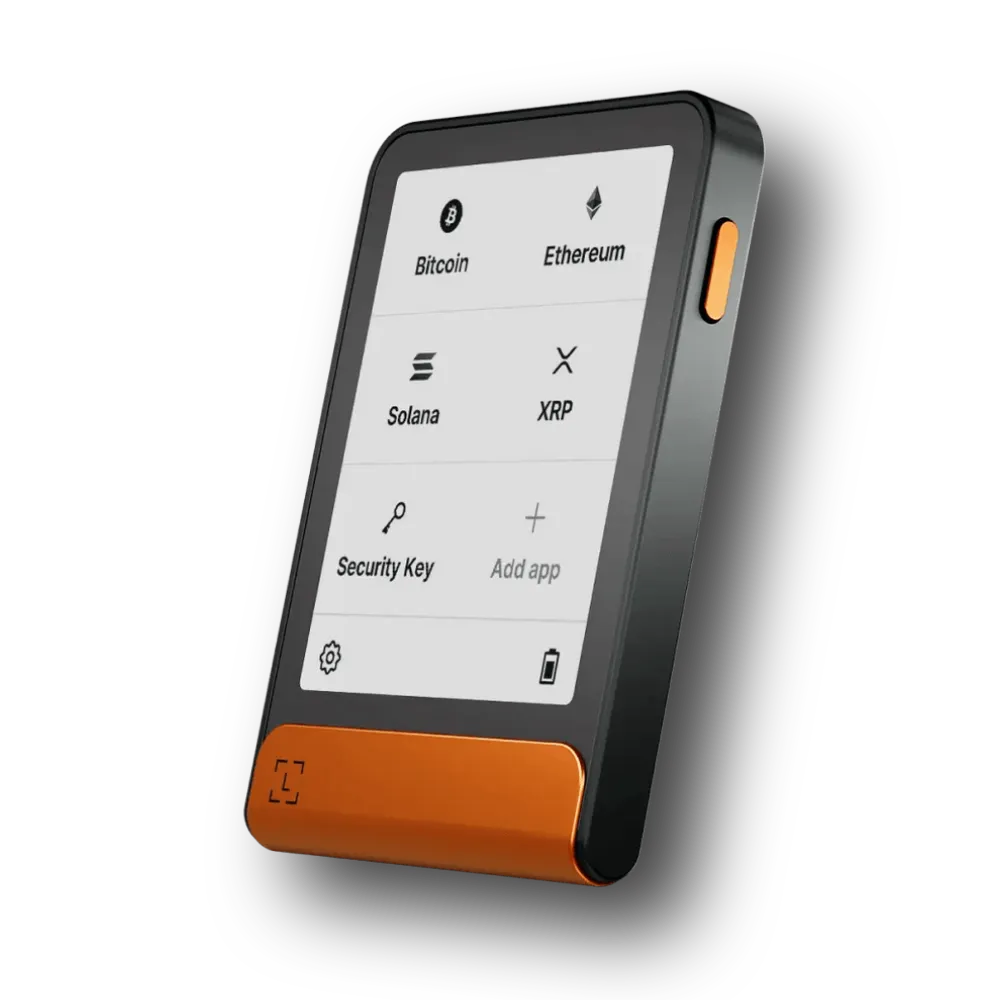 |
Ledger Flex |
9.7
|
$249.00
|
1. Trezor Safe 5 Bitcoin-only
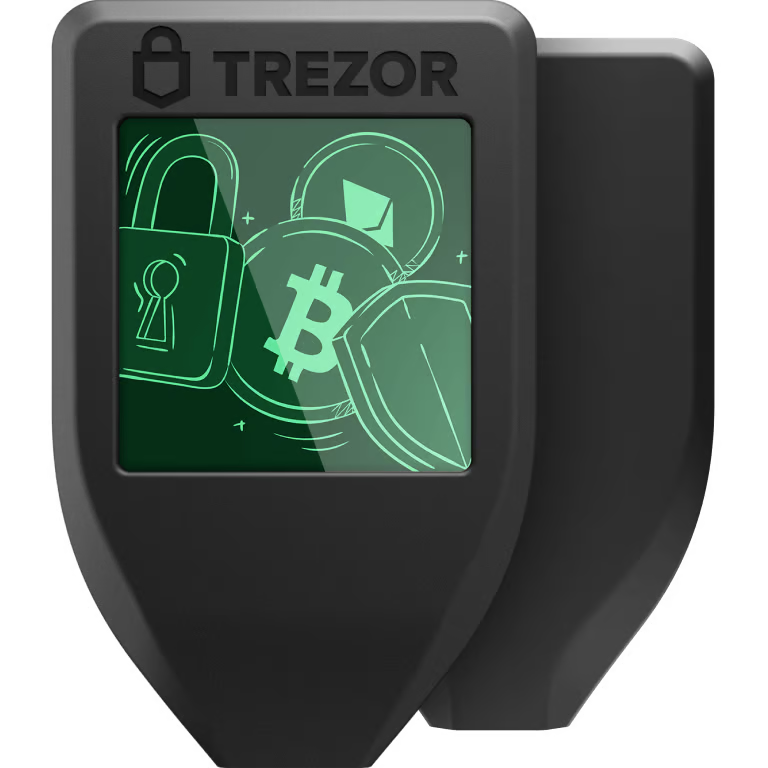
The Trezor Safe 5 is the latest generation of Trezor hardware wallets. It comes in two editions: a universal version that supports thousands of coins and a Bitcoin-only version that strips everything down to focus solely on BTC. Now, for the most secure Bitcoin storage, the Bitcoin-only edition is the one I recommend.
Trezor designed the Safe 5 with a bright 1.54-inch color touchscreen and haptic feedback. Mainly, I like the feel of the on-screen vibration. Because when confirming transactions, it gives you confidence that you have pressed the right button.
The Safe 5 uses an EAL6+ certified secure chip. Older Trezor models relied solely on software security, but the Safe 5 adds this hardware barrier without sacrificing openness. The firmware and hardware remain open source, which means you or any developer can audit the code. The device also has a micro-SD card slot for backups, so you can easily create an encrypted backup on the card and store it separately.
Pros of Trezor
- Open-source firmware and hardware encourage trust
- EAL6+ secure element resists physical tampering
- Vivid 1.54-inch touchscreen with haptic feedback
- Micro-SD slot for encrypted backups
- Bitcoin-only firmware reduces attack surface
- Works with Trezor Suite on desktop and Android
Cons of Trezor
- No native iOS support
- A touchscreen display is a little small
- Micro-SD backup requires careful storage
2. Ledger Flex

Ledger Flex is another most secure hardware wallets for Bitcoin. The first thing you notice is the 2.84-inch E-Ink touchscreen, which is more than twice the size of the Nano X screen. It supports 16 grayscale levels and feels like reading on an e-reader. The screen stays on while consuming almost no power, so you can review addresses and transaction details without rushing.
Ledger uses a CC EAL6+ certified secure element in the Flex. The older Nano X uses an EAL5+ chip, so this is a step up, and the Flex can manage over 5,500 coins and tokens and allows up to 100 apps to be installed at once. The Flex still uses Bluetooth and USB-C, like the Nano X.
The Flex also supports FIDO authentication for web sign-ins, and it works with Ledger Live on every major operating system, including Windows, macOS, Linux, Android, and iOS. It also connects to MetaMask and other third-party wallets. (Read my honest Ledger Flex review)
Pros of Ledger
- Large 2.84-inch E Ink touchscreen
- CC EAL6+ secure element for strong security
- Supports 5,500+ coins with 100 installed apps
- Bluetooth and USB-C connectivity
- Passphrase entry directly on the device
- Works with Ledger Live on all major platforms
Cons of Ledger
- High price at around USD$249
- E Ink refresh can feel slow
- Proprietary firmware (not fully open source)
- Bluetooth may worry some security purists
3. ELLIPAL Titan 2.0

ELLIPAL offers air-gapped Bitcoin hardware wallets. This wallet has no USB, Bluetooth, or Wi-Fi connections, and instead, you transact through QR codes scanned between the device and the mobile app.
The Titan 2.0 offers a 4-inch touchscreen and security features like air-gapping and anti-tampering safeguards. The screen is large enough to show full addresses and transaction details without straining your eyes. I find the smartphone-like interface intuitive, though it makes the device bulkier.
The Titan 2.0 uses a metal casing and has a tamper-resistant design. So, if someone tries to pry it open, the device erases sensitive data. It also includes a CC EAL5+ secure element and supports 24-word seed phrases. The firmware update process is faster than before, and the new model supports over 10,000 coins across more than 40 blockchains. That’s more than most wallets, though many of those coins are accessible through the companion app. (Read full ELLIPAL Titan 2.0 review)
Pros of ELLIPAL
- Fully air-gapped transactions via QR codes
- Anti-tampering metal body with self-destruct protection
- Large 4-inch color screen for clear viewing
- Supports over 10,000 coins and 40+ blockchains
- Fast firmware updates and 24-word seed support
- Integrated swapping, staking, and Web3 services
Cons of ELLIPAL
- Bulky and heavier than other wallets
- Limited coin selection for staking and swapping
- QR workflow can be slow for frequent transactions
4. Keystone 3 Pro

Keystone 3 Pro is in my list of secure hardware Bitcoin wallets because of its triple SE chips. It features three secure chips: Microchip ATECC608B, Maxim DS28S60, and Maxim MAX32520. Two chips protect your seed phrases, and the third secures fingerprint data. The firmware is fully open source under the MIT license and audited by security firms.
The wallet has a PCI-grade anti-tampering mechanism that houses all critical chips. If tampering is detected, it automatically wipes sensitive data, and you can choose a Bitcoin-only firmware to further minimize code. The Keystone supports more than 5,500 coins and tokens. It supports 50+ Bitcoin software wallets too, such as Sparrow Wallet, Blue Wallet, MetaMask, and Exodus.
Pros of Keystone
- Triple secure element chips protect keys and biometrics
- Open-source firmware with security audits
- Embedded OS reduces attack surface
- PCI-grade anti-tampering housing wipes data on intrusion
- Bitcoin-only firmware option for maximalists
- Fingerprint sensor for quick authentication
Cons of Keystone
- No Bluetooth; relies on QR codes or USB
- Slightly bulky due to the large screen
- Limited mainstream brand recognition
5. BitBox02
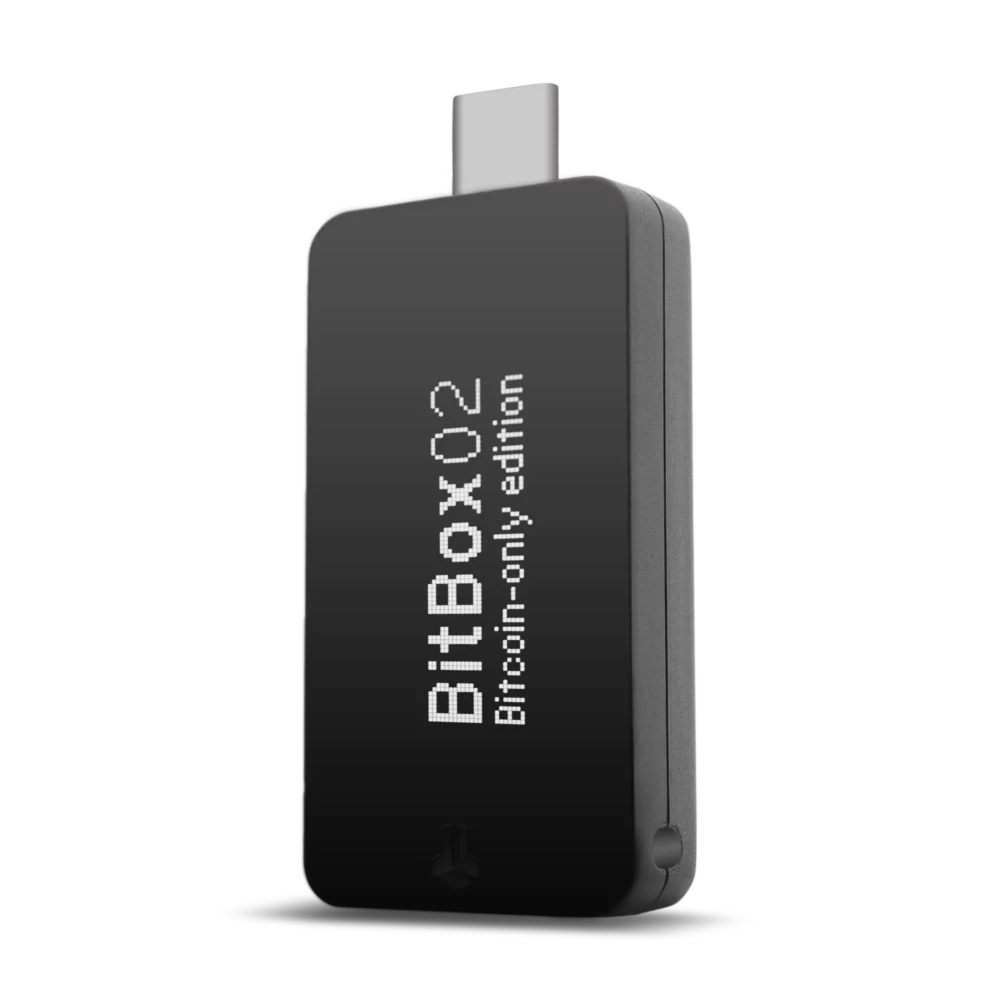
The BitBox02 is a minimalist hardware wallet from Swiss company Shift Crypto AG. I first tried it in 2020 and was impressed by its simplicity. It supports multiple cryptocurrencies, including a Bitcoin-only edition for added safety.
The design is compact and uses invisible touch sensors. Instead of physical buttons, you swipe or tap the sides of the device to navigate. This takes a bit of practice but quickly becomes second nature. A built-in USB-C connector makes it easy to plug into modern devices, and a USB-C to USB-A adapter is included.
The BitBox02 also includes a secure chip for tamper resistance and implements the anti-klepto protocol to prevent private key leakage during signing.
Pros of BitBox
- Open-source firmware with independent audits
- Compact design with invisible touch sensors
- Built-in USB-C connector with adapter
- Encrypted microSD card backup included
- Anti-klepto protocol prevents key leakage
- Bitcoin-only edition reduces attack surface
Cons of BitBox
- Limited coin support
- No wireless connectivity
- The plastic body feels less premium
Comparing the Most Secure Wallets for Bitcoin
| Wallet | BTC Support | Price | Bitcoin Address Types |
|---|---|---|---|
| Trezor Safe 5 | Yes (Bitcoin-only edition available) | $169 | Legacy (P2PKH), SegWit (P2SH), Native SegWit (Bech32) |
| Ledger Flex | Yes | $249 | Legacy (P2PKH), SegWit (P2SH), Native SegWit (Bech32) |
| ELLIPAL Titan 2.0 | Yes | $129 | Legacy (P2PKH), SegWit (P2SH), Native SegWit (Bech32) |
| Keystone 3 Pro | Yes (Bitcoin-only firmware option) | $169 | Legacy (P2PKH), SegWit (P2SH), Native SegWit (Bech32) |
| BitBox02 | Yes (Bitcoin-only edition available) | $119 | Legacy (P2PKH), SegWit (P2SH), Native SegWit (Bech32) |
Read more: Best cold storage wallets
What are the best wallets to keep my Bitcoin safe?
The best wallets to keep your Bitcoin safe are Ledger Flex, Trezor Safe 5, and ELLIPAL Titan 2.0. To start with, if you prioritize transparency and a strong community, the Trezor Safe 5 and Keystone stand out. Both of them have fully open-source firmware, and their security models have been vetted by independent reviewers.
Now, for those who want to store altcoins along with Bitcoin, the Flex is best because it supports over 5,500 assets and up to 100 apps. Its large screen aids careful review, and Bluetooth provides convenience. ELLIPAL is another my top contenders for air-gapped security.
What is the most secure hardware wallet for Bitcoin?
Trezor Safe 5 is the most secure hardware wallet for Bitcoin with a Bitcoin-only edition. It balances openness with an EAL6+ secure element, and the firmware is fully transparent. It is also the most anonymous Bitcoin hardware wallet with Coin Control support for transaction mixing and Tor browser for privacy.
If you want a multi-chain wallet, read my guide on the best crypto hardware wallets…
